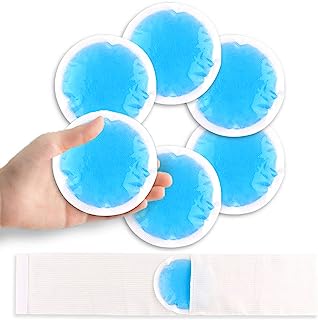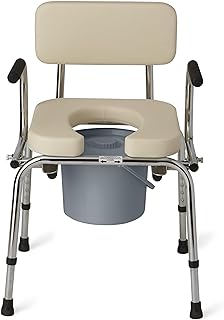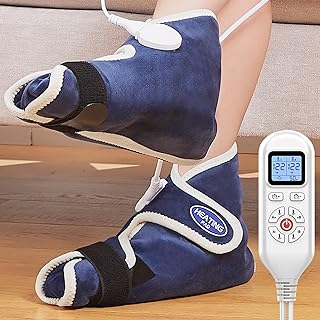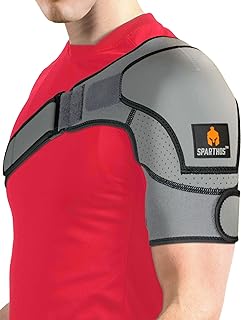5 important factors worth considering when looking for the best compression arm sleeve for lymphedema
When choosing a compression arm sleeve for lymphedema, there are several important factors to consider to ensure it provides the best support and comfort for people with this condition. The quality of the material, level of compression, size, and fit all play a crucial role in how well the sleeve will help manage lymphedema symptoms. It is important to understand these factors and make choices based on personal needs and preferences to improve the overall experience and outcomes for those managing lymphedema.
See our guide to the best compression arm sleeve for lymphedema.
Compression level
When you’re looking to buy a compression arm sleeve for lymphedema, it’s important to think about the level of compression. The right amount of compression can make a big difference in how well the sleeve works and how comfortable it is. While you might be tempted to choose a higher compression level for better results, it’s important to find a balance. Too much compression can slow down blood flow and be uncomfortable to wear for a long time, while too little compression might not give you enough support for managing lymphedema symptoms effectively.
To find the right compression level, you should understand your own needs and talk to a healthcare provider. Think about how bad your lymphedema is, what feels comfortable to you, and any other health issues that might affect your circulation. By picking the perfect compression level for your needs, you can get the most out of the sleeve while staying comfortable and sticking to a routine of wearing it regularly.
Size and fit
Selecting the right size compression arm sleeve for lymphedema is important for comfort and effectiveness. Having the correct fit is essential for managing symptoms well. A sleeve that is too tight can make swelling worse, while one that is too loose may not help reduce symptoms. The best size will gently apply pressure to improve circulation without causing discomfort.
Choosing the right compression arm sleeve is an investment in your health. It’s important to get accurate measurements and seek advice from a healthcare professional or fitting expert to find the right size for your needs. It may take some trial and error, but the benefits of better lymphatic drainage and reduced swelling make it worth it. Don’t settle for a one-size-fits-all approach to managing lymphedema; focus on size and fit to get the most out of compression therapy and take control of your symptoms.
Material and breathability
When looking for a compression arm sleeve made for lymphedema, it’s important to consider two key factors: the material it’s made of and how breathable it is. The material affects how supportive and comfortable the sleeve will be when worn for long periods. Choosing a durable fabric like spandex or nylon can provide the necessary compression to effectively manage lymphedema symptoms. Along with material, it’s crucial to think about how breathable the sleeve is. A breathable fabric allows for airflow, reducing the chance of skin irritation and making it more comfortable to wear.
For those with lymphedema, finding a compression arm sleeve that balances material quality and breathability is vital for managing symptoms in the long run. Prioritizing a sleeve that is made of high-quality materials and promotes airflow can improve the effectiveness of lymphedema treatment. By choosing a sleeve that addresses both material and breathability, individuals can get the support and comfort they need to confidently navigate their lymphedema journey.
Comfort and flexibility
When buying a compression arm sleeve for lymphedema, it’s important to prioritize comfort and flexibility. These sleeves are more than just clothing – they are tools to help you feel better every day. Choosing a sleeve that has the right amount of compression and can stretch is key to making sure it works well and feels good. Using lightweight and breathable materials can help you feel more comfortable and able to move easily without feeling restricted.
Getting a good quality compression arm sleeve that focuses on comfort and flexibility is an investment in your health and happiness. Don’t just pick any sleeve – think about what you need and what you like when choosing the right one for you. Look for features like moisture-wicking, cuffs that aren’t too tight, and seamless designs to improve your experience. Ultimately, finding a compression arm sleeve that fits well into your daily routine can give you the support and confidence you need to live with lymphedema.
Durability and maintenance requirements
When looking for a compression arm sleeve for lymphedema, it’s important to consider how long it will last and what it needs to stay in good condition. A well-made sleeve with strong materials can help manage lymphedema symptoms effectively over time. Choosing a sleeve that is durable can save you time and money because you won’t have to replace it as often.
It’s also important to follow the washing and storage instructions for your sleeve to make it last longer and work better. Finding a compression arm sleeve that is easy to take care of can simplify your daily routine and reduce stress. Investing in a sleeve that is both durable and low-maintenance can give you peace of mind and consistent support in managing your lymphedema.
Prioritizing durability and maintenance when choosing a compression arm sleeve can improve its effectiveness and provide long-term benefits for your health.
Conclusion
In summary, using compression arm sleeves for lymphedema shows potential as a non-invasive and effective way to manage the condition. These sleeves can help reduce swelling, improve circulation, and ease discomfort, making them a practical choice for people dealing with lymphedema. While more research and personalized care are important, embracing the benefits of compression arm sleeves can help individuals improve their quality of life and take charge of their health journey. Want more info on boys underwear, check the best boys underwear.



